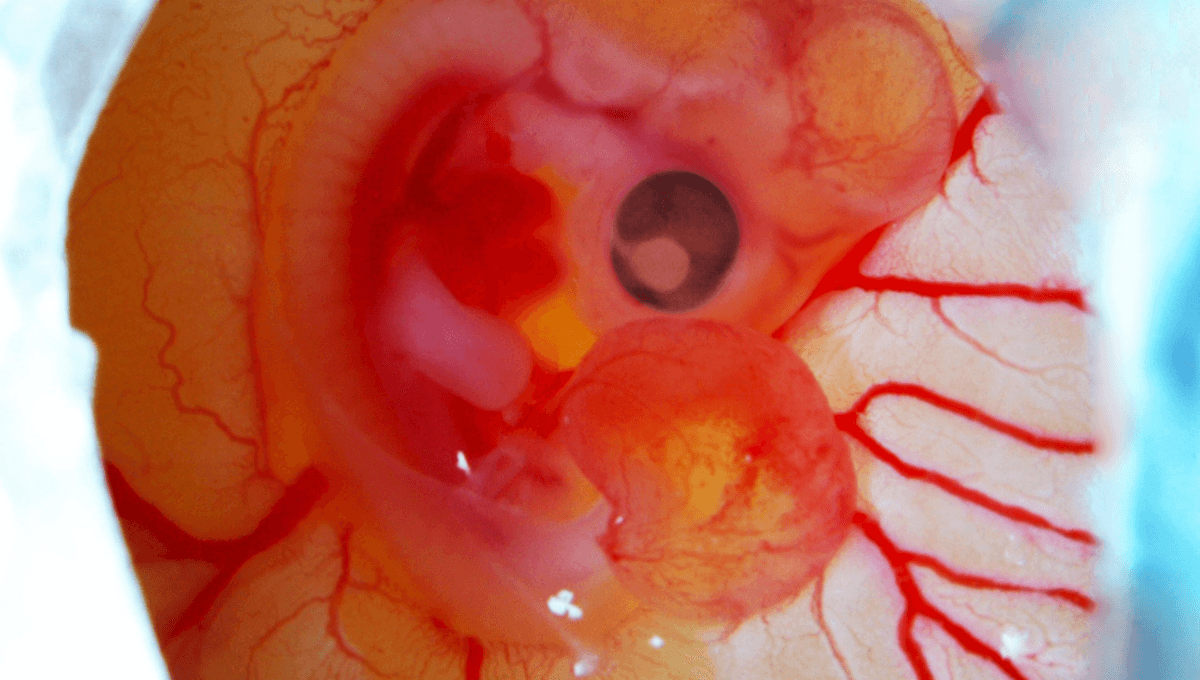
Nanoplastics are everywhere – from the food we eat to the rain that falls from the sky – and a new study has found they are capable of causing malformations in the embryos of chickens. While it’s unclear how they may be impacting human health, the researchers suggest their findings should be a cause for concern.
Scientists at Leiden University in the Netherlands investigated how polystyrene nanoplastics were impacting the development of chick embryos. To their alarm, they found that the human-made particles were linked to malformations in the heart, eyes, and nervous system.
“We see malformations in the nervous system, heart, eyes, and other parts of the face,” Meiru Wang, lead study author at the Institute of Biology Leiden, said in a statement.
“We used a high concentration of polystyrene particles, that would normally not be present in an organism. But it shows what nano-plastics can do in extreme cases on very young embryos. And it also gives us guidelines on what can happen less severely in the developmental stage,” explained Wang.
The problem is down to how nanoplastics affect neural crest cells, stem cells that are formed in the very early development of all vertebrates. The neural crest cells start in what will become the spinal cord, before migrating to help form other parts of the nervous system, as well as several vital organs, such as the arteries, heart, and face.
The study showed that nanoplastics “passively target” the embryonic neural crest cells, sparking a chain reaction that disrupts how those cells migrate and develop.
“We think they stick to the neural crest cells, which causes the cells to die. Neural crest cells are sticky, so nanoparticles can adhere to them and thereby disrupt organs that depend on these cells for their development,” added Michael Richardson, Wang’s supervisor at Leiden University and study author.
“I like the metaphor of making dough. When making bread, for example, you put flour on it to make it not sticky anymore. However, in this case, it ruins the migration of the neural crest cells,” he explained.
Mounting evidence is showing that tiny particles of plastic pollution have penetrated practically every corner of Earth’s natural environment, from the snow of Antarctica to the vital organs of humans. Nanoplastics, which this latest study defined as 25 nanometers in size, are especially concerning as they’re so small they can wheedle further into the body and cross the blood-brain barrier.
Their full impact on animal health is still not widely understood. Nevertheless, just as many suspected, a growing body of evidence is showing that both microplastics and nanoplastics are not good news.
Just this month, scientists defined a new condition caused by ingesting plastic that threatens their capacity to obtain the nutrients they need to grow, which they called “plasticosis”.
As this latest study on chick embryos shows, we’re only just starting to grasp the depth of the planet’s plastic problem.
The study is published in Environment International.
Source Link: Nanoplastics Mess Up The Development Of Vital Organs In Chick Embryos